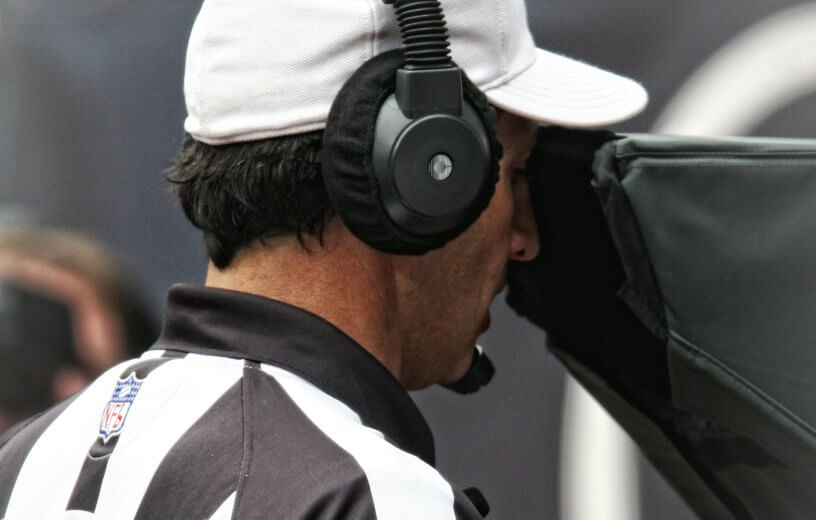ATHENS, Ga. — It’s very common for football fans to become emotionally invested in the results of a disputed call up for review by referees. In many cases, the entire fate of the game could hang in the balance. Now, a study out of the University of Georgia finds that even advertising brands should be wary of these decisions.
Researchers say that instant replay results, compounded by how crucial the call may be to a game’s outcome, influence how viewers perceive brands advertised during referee deliberations.
While referees go over game footage and go over their decision, TV viewers are often shown a short commercial or banner advertisements. The study claims that the result of the replay itself, more specifically whether it hurt or helped one’s preferred team, impacts perceptions of brands advertised during the stoppage in play.
Viewers also react more positively to advertisements shown during crucial instant replay breaks in close games, as opposed to an instant replay that takes place during a one sided contest.
“I watched a tennis game one day and saw the replay system,” explains co-author Jihoon “Jay” Kim, a doctoral student at Georgia, in a statement. “While the video was reviewed live, I saw a brand logo on the screen and thought it was interesting because two groups of fans were watching it; the result of the replay video would make one group happy and the other group unhappy.”
Jay Kim and his co-author Jooyoung Kim created an online experiment involving just under 400 students. Each participant viewed brand-sponsored instant replay videos during college football games, and were then given a questionnaire based on the result of the replay review.
“An advertisement used correctly can have a positive emotional transfer to a consumer,” notes Jooyoung Kim. “A traditional view is that attitudes toward advertising leads to attitudes toward the brand, which then drives consumer behavior.”
The study measured participant responses across four separate game situations, varied according to caliber of rivalry and level of suspense: rivalry games, non-rivalry games, suspenseful games, and non-suspenseful games.
The results revealed an increased focus and attention from viewers during rivalry games and during suspenseful moments in the game. Viewers also felt a greater amount of positive emotion when the replay benefited their team late in a close game compared to a less suspenseful moment in the game.
The study may prove extremely interesting to advertisers and brands looking to make a connection with consumers.
“Advertisers want to be present at the place where their audiences are happy rather than mad. They want to be associated with the positive memory,” Jooyoung Kim says.
The research team even say that advertisers could opt to only advertise to “happy fans” based on referee decisions thanks to the typical seven-second broadcast delay for live sporting events.
“We like when our opponent fails and don’t like when the opponent succeeds. But that’s the reality of being human, and the marketers can seize this untapped opportunity for their brands,” Jooyoung Kim explains.
The study is published in the Journal of Consumer Behaviour.
